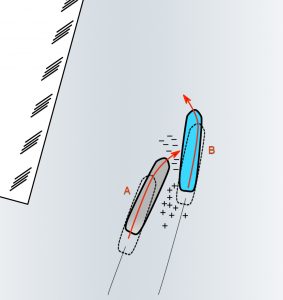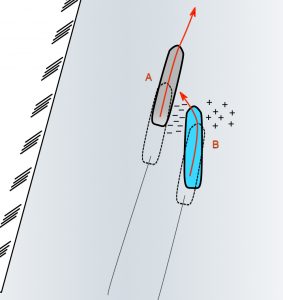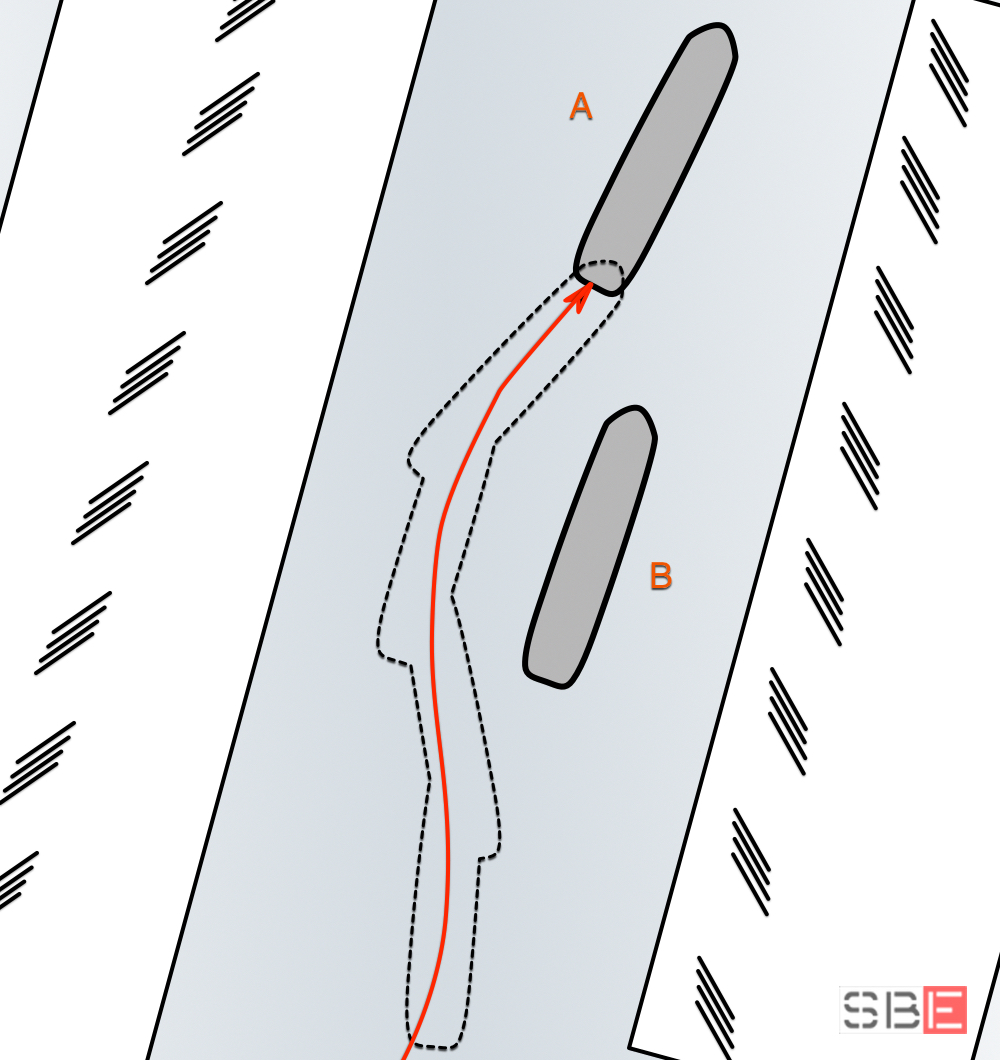Overtaking Under Way in a Canal
The COLREGs 72 governs channel navigation under rule 9 and rule 13.
in overtaking a ship, we must face the following:
- when the bow of the overtaking vessel “A” reaches the quarter of the vessel “B”, the speed of “B” might increase significantly due to the water thrust caused by “A”;
- the first effect foresees a tendency of the stern of “B” to move away dangerously, bringing the bow towards the route followed by “A”;
- about one-third of the length of “B”, the vessel “A” suffers the effect of suction tending its bow towards the overtaken vessel;

- when vessels are more or less abeam of one another, the sterns draw while the bows repel each other, but may also happen a ship/ship interaction, dangerous behaviour that tends to draw the vessels bodily together;

- When overtaking is over, the bow of “B” and the stern of “A” draw. There is a new further increase in speed of “B” due to the drag trail of “A”.

Let’s go back to phase 2, where the vessels are abeam of another.
A situation may arise where the two ships tend to draw each other remaining ‘trapped’.
Trapping can occur when the overtaking vessel fails to complete its manoeuvre. It is due to the drag that both ships experience.
At the start of the overtaking, the oncoming ship finds less resistance and accelerates, while the overtaken vessel, at the same time, decelerates. During overtaking, the opposite happens; the overtaking vessel encounters more resistance and tends to slow down, while the overtaken vessel’s less resistance causes it to accelerate. In extreme cases, the two ships bodily draw, proceeding side by side, locked together. It is the most dangerous situation to counter by moving away when the first signs occur.
A technique that minimises the risks in confined waters foresees that the overtaken vessel “B” stops the engine and slows down until it is almost stationary on one side of the channel. In contrast, vessel “A” overtakes proceeding at minimum speed. Speed rate allows the overtaken vessel not to be affected by the side effects and the overtaking vessel to move at the minimum speed possible, which is relatively high compared to the other ship. Overtaking is safe by limiting ship/ship and ship/side interactions. The void, which ship “A” leaves on passage, draws ship “B” towards the centre of the canal, where it can resume motion. Both ships can perform short “kick ahead” to hold positions sought.
Let’s see in graphics:

Overtaking between vessels in the canal must be agreed upon by both the ship to be in the correct position and ready to intervene to reduce unwanted effects.
The ‘weapons’ available to manage these situations are:
- know the effects, to be able to predict and prevent them,
- proceed at reduced speed to reduce the potential risk and have sufficient engine power to increase the efficiency of the rudder,
- use the engine and helm properly, &
- maintain VHF radio contact.
